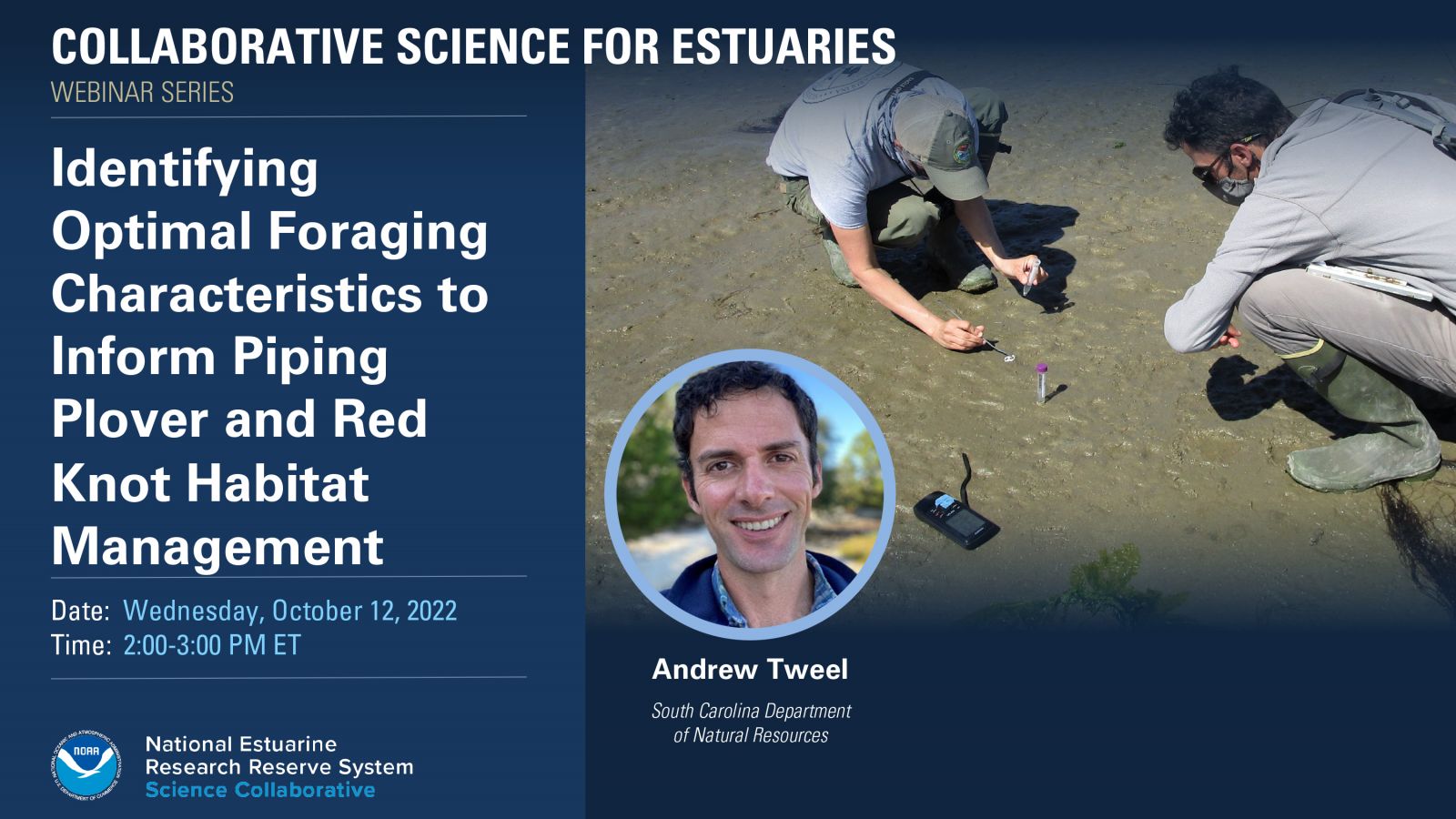Webinar Description
Shorebird populations are declining globally in the face of sea level rise, increasing coastal development, and shoreline modifications. The piping plover and red knot have exhibited population declines in recent years, particularly in the intertidal habitats of South Carolina. Recent research has established linkages between benthic prey abundance and foraging activity along South Carolina beaches; however, most of these projects focused on determining impacts from shoreline modification, rather than quantifying habitat characteristics. Identifying characteristics associated with optimal foraging habitat can help inform state and federal permitting and habitat management activities in areas these shorebirds inhabit.
A project team at the ACE Basin Reserve worked with the SC Department of Natural Resources and the U.S. Fish and Wildlife Service to develop a habitat assessment tool for the piping plover and red knot. In this webinar, project lead Andrew Tweel shares methods and outcomes of the project, including a refined list of preferred prey species for piping plovers and a preliminary list for red knots. Tweel discusses what prey species are important, what makes certain areas foraging hotspots for the piping plover and red knot, and how this information can inform management decisions within South Carolina and across the U.S.
Webinar Summary Products
- Webinar Recording (YouTube)
- Speaker Bios (Webinar Page)
- Slides and Q&A (PDF)
